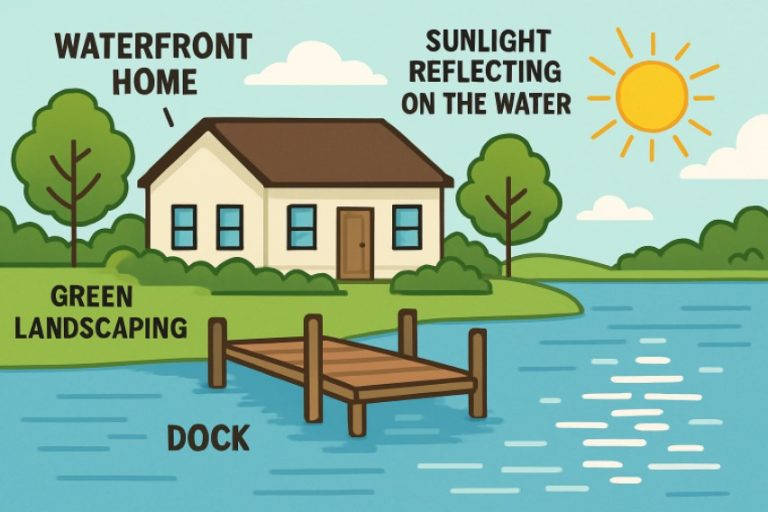Owning a waterfront property is a dream for many, offering mesmerizing views, tranquility, and a unique lifestyle. Whether it’s for year-round living or a vacation retreat, Palm Beach FL homes for sale provide exclusive access to some of the most coveted waterfront real estate. Buying a waterfront house involves more complexity than traditional real estate. It requires research and understanding of environmental issues, insurance, and responsibilities. This investment affects your lifestyle and daily life. Consult experts, research rules, and be proactive. Use established guides for more insights.
Contents
- 1 Understanding Local Regulations and Restrictions
- 2 Assessing Maintenance and Upkeep Requirements
- 3 Evaluating Insurance Needs and Costs
- 4 Conducting Thorough Property Inspections
- 5 Considering Environmental Factors and Climate Change
- 6 Understanding Financial Implications
- 7 Consulting with Experienced Real Estate Professionals
- 8 Conclusion
Understanding Local Regulations and Restrictions
Every waterfront location operates under a distinct set of local, state, or even federal rules. These may regulate what you can build or modify on your land, such as the installation of docks, seawalls, or new outbuildings. In some regions, setback requirements or environmental buffers can impact everything from landscaping to home expansion. It is critical to check with public planners or work with a seasoned real estate professional familiar with the area’s zoning laws before signing a contract. Regulations regarding floodplain or wetland development may affect your ability to obtain permits for improvements, so clarifying these details early will help avoid costly surprises later.
Assessing Maintenance and Upkeep Requirements
Waterfront properties are subject to environmental stressors such as salt air, humidity, intense storms, and the possibility of flooding or erosion. Maintenance demands are higher than those for inland homes, and neglecting them can lead to expensive repairs. Routine tasks include:
- Inspection and periodic reinforcement of docks, seawalls, and pilings
- Regular treatment and repair of exterior wood and metal surfaces to guard against rust and rot
- Managing proper drainage to prevent land erosion or foundation weakening
Hiring specialized maintenance services familiar with waterfront property issues is often necessary. These professionals can ensure protective measures, such as weatherproofing and structural fortification, are up to the intense demands of a waterfront environment.
Evaluating Insurance Needs and Costs
Homeowners insurance for a waterfront home will almost certainly cost more than for an inland home due to greater exposure to water, storms, and flood risks. Standard policies often exclude flooding, meaning you’ll need a separate policy from the National Flood Insurance Program or a private insurer. Understanding your coverage options — and their limitations — is critical, especially as more regions are considered at high risk due to climate change and rising sea levels. Consulting with an agent who understands the needs specific to waterfront properties will help you identify gaps before disaster strikes.
Conducting Thorough Property Inspections
A detailed property inspection goes beyond the basics when purchasing a waterfront home. You’ll want an inspector who has experience evaluating waterfront properties and can look for hidden issues such as shoreline erosion, compromised seawalls, unstable foundations, wood rot, and mold that thrive in damp environments. In addition to standard building inspections, invest in water quality tests if you rely on a private well, and have the stability of the shoreline professionally assessed. These extra steps can safeguard your home and investment.
Considering Environmental Factors and Climate Change
Rising sea levels and increasingly unpredictable weather patterns are adding new challenges for waterfront homeowners nationwide. It’s important to research the local history of flooding, hurricanes, or erosion along your intended stretch of shoreline. This research will inform your plans for flood defenses or home fortifications and may even impact your eligibility for certain insurance options or government programs. Being aware of the property’s vulnerability to natural forces allows you to plan for proactive protective measures, such as installing hurricane-rated windows or elevating utilities.
Understanding Financial Implications
The sticker price on a waterfront home is only the beginning. Expect higher property taxes, not just because of the premium location, but also because of increased maintenance and operating costs. Utilities might be more expensive if the property relies on its own water or septic system, and there may also be HOA or marina fees for maintaining shared amenities. Plan for these recurring expenses in your budget, and ask your real estate agent to clarify all potential fees before closing.
Consulting with Experienced Real Estate Professionals
Working with real estate agents who specialize in waterfront properties can make a dramatic difference in your experience. They understand local legal requirements, know what to look for during property searches, and can negotiate the best price and contract terms. These professionals also bring valuable connections — from marine inspectors to specialty lenders — who can simplify and safeguard the transaction. Make sure to choose someone with proven expertise in the area you’re buying, particularly if you’re new to waterfront living.
Conclusion
Purchasing a waterfront home is a substantial commitment with exceptional rewards and unique challenges. By preparing for legal restrictions, increased maintenance, and special insurance needs, you can maximize the enjoyment of your home and protect your investment. Whether the lifestyle or investment potential draws you, an informed approach ensures your waterfront dream remains a source of pride and enjoyment for years to come.

